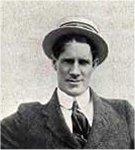|
|
||||||||||||||||||||||||
 |
Featured person
Recently added |
John Macoun (1831 - 1920): |
||||||||||||||||||||||
John Macoun was born in Magheralin, County Down, Ireland 17th April, 1831, the third child of James Macoun and Anne Jane Nevin. In 1850 the worsening economic situation in Ireland led his family to emigrate to Canada, where he settled in Seymour Township, Ontario and began farming. Unsatisfied as a farmer, he became a schoolteacher in 1856. It was during this time that he developed a nearly obsessive interest in botany. Although his formal education was slight, his knowledge and dedication to fieldwork became sufficiently advanced that he gained the notice and respect of several professional botanists. By 1860 he was teaching school in Belleville, and had established correspondence with botanists such as Asa Gray, Sir William Jackson Hooker, George Lawson, and Louis-Ovide Brunet. This allowed him in 1868 to secure a faculty position as a Professor of Botany and Geology at St. Alberts College in Belleville. His marriage on 1 Jan 1862 to Ellen Terrill of Brighton, Ontario was to lead to two sons and three daughters In 1872 Macoun had a chance meeting with Sanford Fleming, then chief engineer for the proposed Canadian Pacific Railway. Fleming recruited Macoun to participate in his expedition to the Pacific of 1872, and between 1872 and 1881, Macoun participated in five separate surveying expeditions in the Northwest. Aside from determining the best route for the railway, a major purpose of these expeditions was to determine the agricultural potential of various regions of the west. Since Macoun's travels corresponded to a time of unusually high rainfall, he concluded that large regions of the Northwest were ideally suited to agriculture. Unfortunately, this mistakenly included the normally arid plains of southern Saskatchewan and Alberta in the region now known as Palliser's Triangle, which was to become a dustbowl during the Great Depression of the 1930's. In concert with the political consideration of forestalling northwards American expansion, Macoun's assessment contributed much to the final southern routing of the CPR across the prairies Macoun's reports from west attracted the notice of Alfred Richard Cecil Selwyn, director of the Geological Survey of Canada, and in 1879, the Government of Canada took the unusual step of officially appointing him "Explorer of the Northwest territories". In 1881, after the mission of the CGS had been expanded to include natural history, he moved his family to Ottawa and joined the CGS as "Dominion botanist". He remained with the CGS for 31 years and became an Assistant Director in 1887. In 1882 he became one of the charter members of the Royal Society of Canada. Every summer was dedicated to fieldwork, and for the remainder of his life Macoun was a prolific collector and cataloguer of Canadian flora and fauna, even after suffering a debilitating stroke in 1912. To this day, over 100,000 samples from his collection of plants are housed in the National Herbarium in Ottawa. Macoun has been remembered in Canada through special postage stamps etc Macoun died 18 July 1920 in Sidney, British Columbia, and is interred at Beechwood Cemetery in Ottawa. The standard botanical author abbreviation Macoun is applied to species he described.
| Born: | 17 April 1831 |
| Died: | 18 July 1920 |
| Ulster History Circle |
| References: John Macoun (1979). Autobiography of John Macoun, Canadian explorer and naturalist, 1831-1920, Ottawa Field-Naturalists' Club. ISBN 0969025106. |


Home | Our Policies | Plaques | Browse | Search | Sponsors | Links | Help | Contact
Privacy & Disclaimer | Cookie Policy | Site Map | Website Design By K-Point
© 2024 Ulster History Circle









